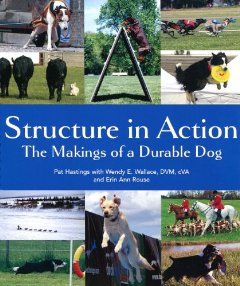Conformation events (dog shows) are more than beauty
contests. The true purpose of these
events is to see which dogs most conform to the breed ideal. In turn, the breed ideal or model has been
determined based on the job that the dog was bred for.
The book, Structure in Action: The Makings of a Durable Dog,
explains how external clues in the form of the dog’s stance and gait provides
judges with an indication of how well the dog fits with the ideal, and
therefore how durable the dog will be in performing its assigned tasks in the
field.
The book helps you understand what to look for in a spaniel
breed, once you cross-reference it with a breed standard and your own knowledge
of breed performance.
Here are some interesting items:
- A short-necked dog is not really short-necked, but instead has a shoulder that is overly vertical (the shoulder blade should be about 45 degrees from the prosternum). A dog’s front leg reach is approximately at nose-tip, and so a short-necked dog will have too short a reach relative to the ideal. A short-reach dog will tire more easily in the field.
- An overly long neck, while sometimes elegant in appearance, can indicate insufficient muscling at the shoulders. An upright neck carriage, associated with a long neck, inhibits swimming as the dog simply splashes through the water because the dog is too vertical and insufficiently horizontal.
- A high rear end means that the dog’s rear legs are too vertical. Such carriage reduces the force with which the dog can accelerate using its rear legs. It also means that the dog must exert more effort to lift its front when jumping and it places too much weight on the front structure, which leaves it vulnerable to injury.
- A rounded croup (i.e., a lower tail set than standard) means that spine curves too much and the dogs legs are under its body to a greater extent than they should be. A steep or rounded croup can also inhibit the backward swing of the leg when running.
- A short croup means that the dog’s rear thighs are not sufficiently muscled, reducing power and drive.
- The loin in most dogs should be no more than 1/3 the length of the rib cage because there is on support for the spine between the attachment of the last rib and the hip. The 1/3 rule seems to provide adequate support without costing the dog too much in flexibility and turning capacity. (I wonder if spaniels would have somewhat longer loins due to their need for turns?)
The book has much more and covers the dog from tip to tail. Those that want to understand what judges should be looking for in the conformation ring will enjoy the discussion.



No comments:
Post a Comment